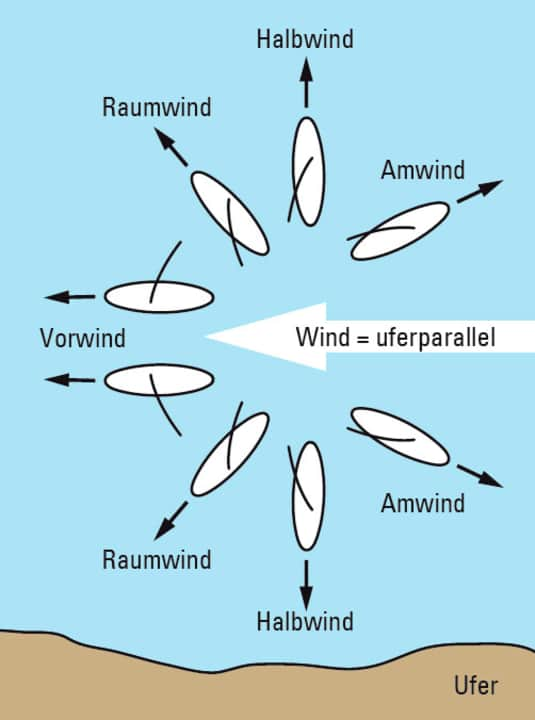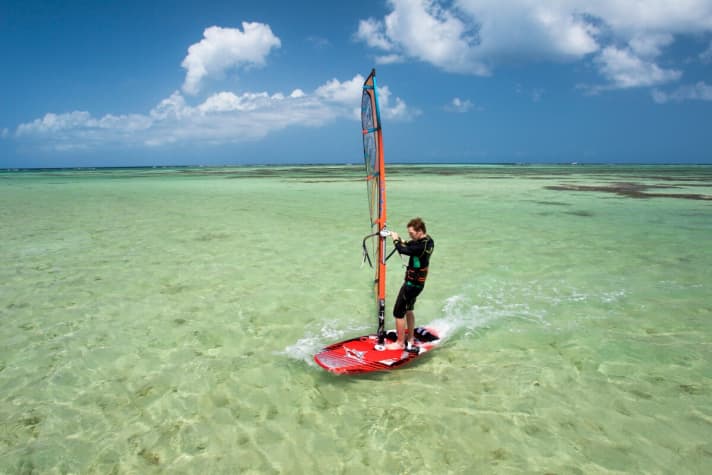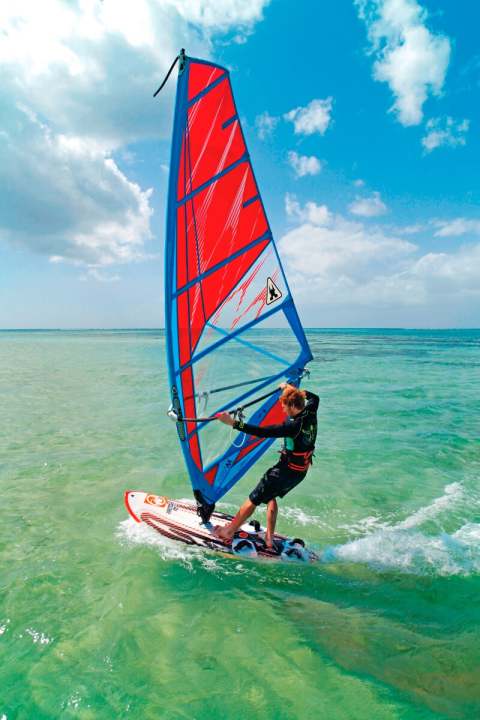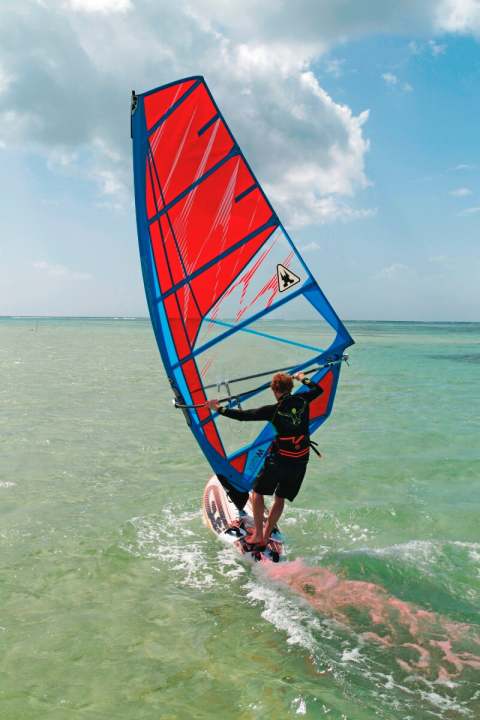Course directions


In windsurfing, the term course is used. The wind is always the decisive factor. The diagram shows the different course directions in relation to the wind. In our example, the wind is blowing parallel to the shore from the right.

Immediately after the start, you surf "across" the wind (half-wind course). As you often fall into the water, especially at the beginning, and always drift a little with the wind, it is particularly important to cross. As you can never sail directly from leeward to windward in all wind-powered sports, but only via detours, you have to sail a course diagonally to the wind, the so-called closehauled course. You can achieve this by luffing after the start, i.e. tilting the sail with the boom end towards the water.

If you want to go downwind from the half-wind course, you drop off and the boom end goes up. You then reach the fastest course in windsurfing, the space wind course.

If you drop any further, your board will turn directly to leeward. This course with the wind is called a downwind course and is the slowest course when surfing.
